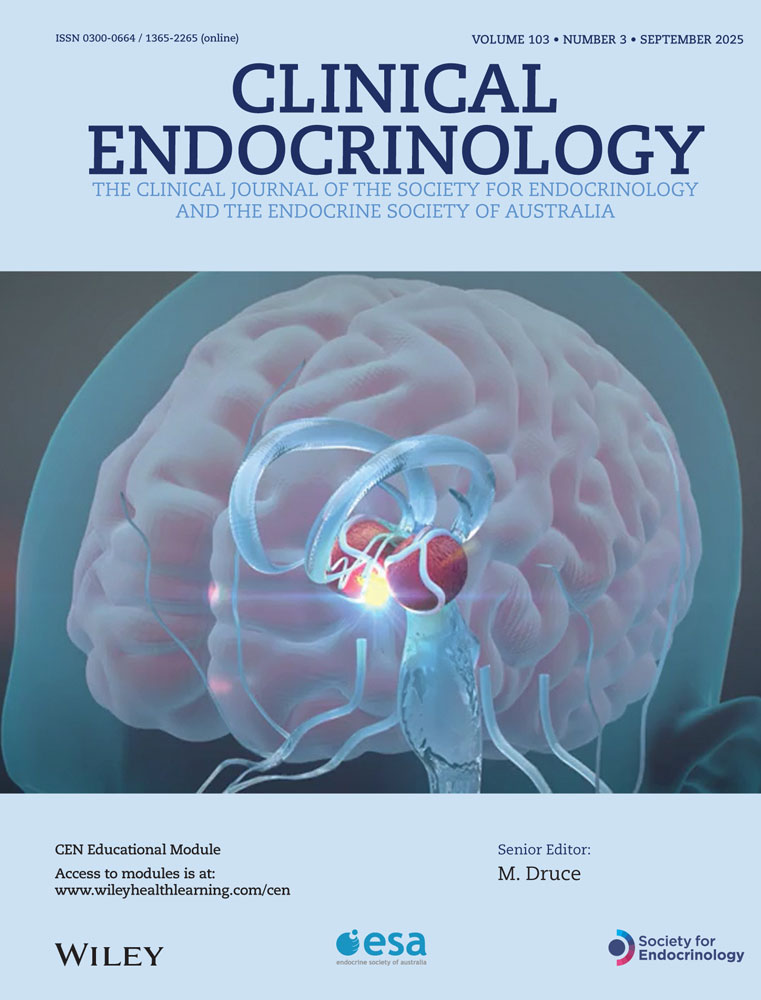Paradoxical elevations in serum IGF-II and IGF binding protein-2 in acromegaly: insights into the regulation of these peptides
Abstract
OBJECTIVE Circulating insulin-like growth factor (IGF)-II and IGF binding protein-2 (IGFBP-2) are frequently altered, often in parallel, in numerous pathologies including neoplastic disease but little is known about their normal regulation. This study compared serum IGF-II and IGFBP-2 distributions between acromegalics and a large normal adult population to explore possible determinants.
PATIENTS Sixty acromegalic patients undergoing screening colonoscopy (age range 25–81 years); normative data from 306 healthy adults (age range 20–89 years).
MEASUREMENTS Serum IGF-I, IGF-II, IGFBP-2 and IGFBP-3 were measured in healthy adults and acromegalics. Mean growth hormone (GH) levels were obtained for acromegalic patients. Differences were compared using t-tests (unadjusted) and multiple regression models (adjusted for age and gender). Correlations were expressed as Pearson's coefficient (r).
RESULTS For acromegalic patients, GH was significantly correlated with IGF-I (r = 0·50; P < 0·001) and IGFBP-3 (r = 0·29; P = 0·03) but not IGF-II or IGFBP-2. Contrary to expectations, mean IGF-II and IGFBP-2 levels were significantly raised in the acromegalics compared with normals [adjusted mean difference (95% CI) = 226 (181, 271) µg/l and 305 (200, 410) µg/l, respectively]. Ten acromegalic patients had colorectal neoplasia but their presence did not contribute to the elevations in serum IGF-II and IGFBP-2. The (IGF-I + IGF-II)/IGFBP-3 molar ratios were remarkably constant in both healthy adults and acromegalics, but the relationships of the ligands individually with IGFBP-3 were not linear: as IGFBP-3 increased, IGF-I also increased whereas IGF-II initially increased but then decreased. IGFBP-2 did not correlate with IGF-II, but molar concentration significantly correlated with the IGF-II/IGFBP-3 molar ratio (r = 0·40; P = 0·001).
CONCLUSIONS Serum IGF-II and IGFBP-2 levels were paradoxically elevated in acromegalics, independent of the presence of colorectal neoplasia. The (IGF-I + IGF-II)/IGFBP-3 molar ratio appears to be pivotal in determining IGF-II values, which, in turn, expressed as a ratio of IGFBP-3, is related to IGFBP-2. These observations offer new insights into the regulation of these peptides.




